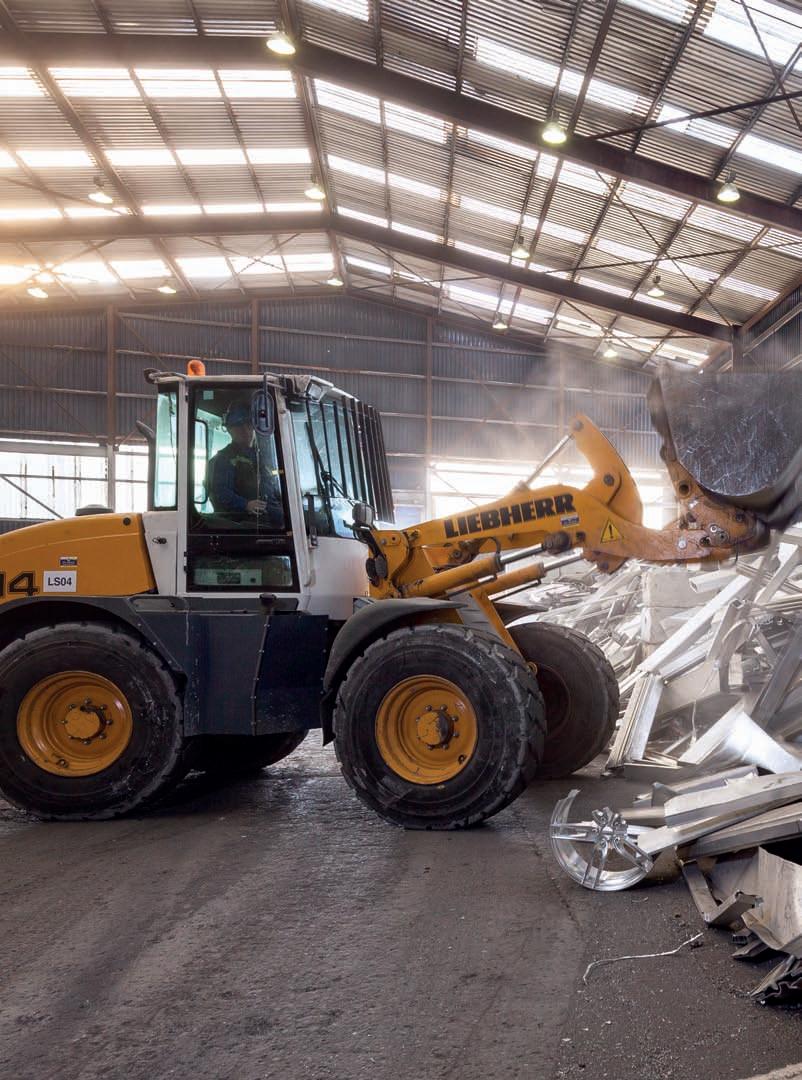
7 minute read
Conquering the niche aluminum
Conquering the niche aluminium market
The remarkable journey of Zalco
Like a phoenix rising from the ashes, aluminium company Zalco has transformed itself following a dramatic bankruptcy in 2011. Just over eight years later, the company is thriving and specialised in producing aluminium for a wide range of industries and products.
ALuminium is highLy suiTAbLe for recycLing And ZALco uses more And more scrAp ALuminium for iTs producTs.

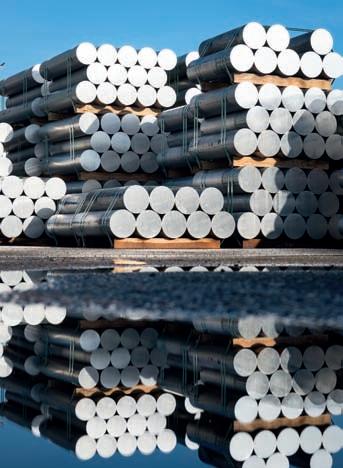
exTrusion biLLeTs reAdy for shipping.
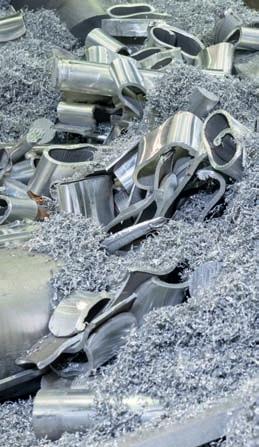
It was a shock that reverberated throughout the region when Zeeland Aluminium Company Zalco went bankrupt in 2011. From one day to the next, the American investors pulled the plug and the smelting and foundry facility shut down its operations. What followed were months of insecurity for the staff and intense negotiations about a possible restart for parts of the company. New investors saw the merit in business proposals drafted by staff, which would take the company in a new direction. In 2012, the company was split up: the smelting facility was permanently shut down and dismantled. While the anode plant was relaunched separately, the foundry facility was reopened with the help of investment company UTB Industry. The new foundry company kept the Zalco name and nearly forty members of staff. However, some significant changes were made, reveals Zalco’s Director Joop de Ridder. “The two biggest changes were the move to specialised aluminium alloys for more niche products and the shift from producing our own new aluminium to using more and more recycled aluminium.”
Strict quality requirements Until 2011, Zalco produced aluminium mostly for commodity products such as window frames. Since the relaunch, the company has shifted its focus towards niche markets. It specialises in casting aluminium extrusion billets and rolling slabs in various dimensions and chemical compositions, for a wide range of products. These can vary from components for car exhausts and air conditioning units to parts used in trains or airplane wings, and from medication packaging to linings for milk cartons. Because each of these industries and components has its own requirements such as strength, flexibility or density, they each demand aluminium with a different kind of chemical composition, or alloy. For instance, there are various copper alloys, zinc alloys or high silicon alloys, which each give the aluminium different characteristics. In order to be allowed to make these specialised alloys, a company has to meet strict safety and quality requirements. “We had to apply for certificates to be able to manufacture these various alloys”, explains Mr de Ridder. “It was a lengthy process
The remeLT furnAce hAs JusT been LoAded WiTh scrAp ALuminium.
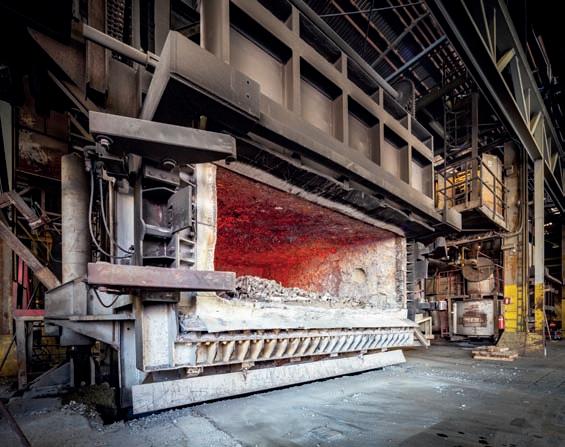
hr And finAnce mAnAger JAn vAn WiJck, direcTor Joop de ridder, And TechnicAL service mAnAger Jeroen bAkker Among The exTrusion biLLeTs reAdy for shipping.

of audits, test products, and applications, but we managed to get most of the certification for which we applied. The only reason we were able to do so was because we kept the original Zalco staff in all the key positions in the company, as well as many of the operators. Without all that knowledge and experience, it would have taken us much, much longer to get certified.”
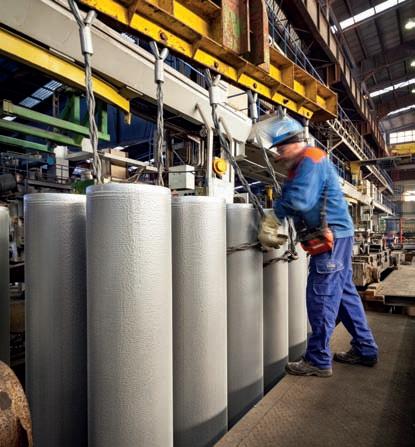
Zalco’s history Zalco’s story began in 1969 with the construction of the plant Pechiney Nederland NV (PNL) under commission of French multinational Pechiney. Vlissingen was selected as its location as the port is situated in deep water, which facilitates bringing in raw materials and transporting final products. The first furnace was started up in April 1971. These days, the company produces a broad range of extrusion billets and rolling slab products. Extrusion billets are available in 27 different diameters, while rolling slabs are available in 60 different formats. This applies to all types of alloys, with lengths available from 500mm to 8,000mm.
These 8m long exTrusion billeTs have jusT been casT and are Taken ouT of The casTing piT.
the bankruptcy, the company had its own smelting facility where new aluminium was made. However, new aluminium is costly to produce because, in addition to the raw materials, the process requires enormous amounts of electricity. Fortunately, one of aluminium’s greatest benefits is that it is highly suitable for recycling. “There is a lot of scrap aluminium available for recycling, which means that it is much more economical to use secondary or recycled aluminium”, comments Mr de Ridder. “As an added bonus, it is also much more environmentally-friendly than producing new aluminium. In comparison, recycling can lead to a reduction in energy consumption of 95%, with a corresponding reduction in CO 2 emissions.” While all aluminium can be recycled, not all secondary aluminium is suitable for the products produced by Zalco. “It all depends on the alloy”, explains Mr de Ridder. “The beauty of aluminium is that once you melt it down, it has the exact same properties of the original raw material. So as long as the chemical composition is right, we can use it to turn it back into charges with the required alloy.” Over the years, Zalco has built a network of reliable suppliers of recyclable aluminium with the right alloys, meaning that more and more scrap aluminium can be used. Mr de Ridder adds, “In the beginning, we used 20% recycled and 80% new aluminium. These days, the percentages are almost reversed: more than 70% is secondary aluminium and we aim to further increase that figure.”
Made to order Zalco produces its aluminium extrusion billets and rolling slabs with conventional casting and with the Wagstaff Airslip method, which has been designed to overcome consistency problems and ensures the charges meet high metallurgical standards. Zalco’s end products serve as raw material for the aluminium processing industry such as pressing shops and rolling mills. Because the company works to order, each charge is alloyed according to the customer’s specifications. To ensure the quality of the aluminium from start to finish, Zalco carries out extensive tests throughout the entire manufacturing process. “It starts with entry checks for all incoming shipments to test the purity of the secondary aluminium and we do a chemical analysis to make sure it meets our requirements”, states Mr Ridder. In addition, each product manufactured is analysed for the right composition by an optical emission spectrometer before casting is begun. “We have an on-site laboratory, which we use to certify all the various alloys throughout the productions process. This takes great precision because there are so many different alloys.” Each batch is given a certificate according to European regulations (EN 14726), which is a determination of the chemical composition of aluminium and aluminium alloys by Spark Optical Emission Spectrometry (OES). The aluminium alloys can also be homogenised, which is a high temperature heat treatment. The treatment is performed after casting and consists of three steps; heat-up, soak and cooldown. The result of the treatment is that the extrusion billets have the exact same structure and quality throughout, something which is of vital importance when the aluminium is used for components in cars or airplanes.
The future is aluminium Nearly eight years since the relaunch, Zalco is now a healthy company with great plans for the future. “Our goal is to expand, because we have the extra capacity to do more”, remarks Mr de Ridder. “We are looking to expand even further into the niche markets. We can’t compete with the major aluminium producers who churn out aluminium for the commodities market, but we can stand out through the enormous variety and quality of our alloys.” The plans will hopefully also include building a wind turbine on the company site in Vlissingen-Oost. Zalco is currently in discussion with North Sea Port and various parties to see if the plans are feasible. Because the company operates 24/7, the ability to generate its own energy from wind could lead to significant savings. All in all, the future is looking good, concludes Mr de Ridder, “We were very lucky that we found an investor who believed in our vision for the company. Back in 2012, we had an idea and we hoped that there would be a market for what we had planned. We have proven there is.”










